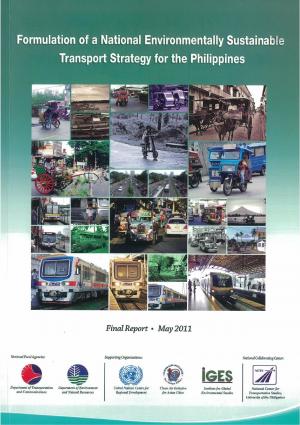How Transportation Advertising Can Transform Public Transport Spaces Into Dynamic Advertising Operatings Systems
Transportation marketing holds significant potential to redefine mass transit rooms into lively advertising and marketing platforms that inform and engage. By using cutting-edge formats such as digital screens and interactive stands, brand names can not just get to a diverse audience however likewise boost the total commuter experience. This method produces a special possibility for brand names to get in touch with consumers in a setting that is commonly forgotten. As we discover the multifaceted benefits and developing methods of transportation advertising and marketing, it elevates the inquiry of just how this makeover could redefine our interactions with both brand names and the urban environment.
Advantages of Transportation Marketing

Furthermore, transportation marketing is highly economical compared to typical media. It allows marketers to achieve high perceptions at lower prices, making best use of return on investment. The restricted audience of travelers provides a chance for brand names to convey their messages to people that are often responsive throughout their travel times.
Moreover, the vibrant nature of transit marketing permits campaigns to be updated regularly, ensuring that messaging stays pertinent and prompt. This flexibility can be crucial in replying to market patterns or advertising events, keeping the brand name top-of-mind for customers. Last but not least, the pervasive presence of transit advertising and marketing adds to brand recall; repeated exposure within acquainted traveling contexts enhances brand name awareness and fosters customer commitment, inevitably driving sales and enhancing brand track record.
Kinds of Transportation Advertising
Mass transit systems offer different styles for marketing, each dealing with various advertising and marketing approaches and target market engagement methods. One famous type is outside bus and train covers, which cover the whole automobile and produce a mobile signboard impact, permitting high exposure in metropolitan atmospheres. These wraps can catch interest as they pass through busy streets, reaching a varied audience.
One more popular layout is indoor advertising and marketing, that includes posters, electronic screens, and ads on transit seats. These positionings involve travelers during their journey, enhancing brand name messaging in a restricted space. Digital presents, in certain, supply the benefit of dynamic material, allowing marketers to update messages in real-time.
Station marketing is likewise substantial, featuring posters, banners, and interactive kiosks within transportation stations. These advertisements leverage foot website traffic and can target particular demographics based upon place.
Lastly, marketing partnerships with transportation authorities can result in one-of-a-kind campaigns, such as themed transit experiences or occasions, boosting the overall interaction with commuters. Each type of transportation advertising offers unique advantages, allowing brand names to customize their method to effectively reach their target audience within the general public transportation environment.
Engaging Commuters Successfully
Commuters are progressively flooded with advertising messages during their everyday trips, making it vital for brand names to involve them in innovative methods. To record focus in this crowded area, marketers have to prioritize imagination and significance. Making use of appealing visuals and succinct messaging can discover this dramatically enhance the possibility of interaction.
Interactive components, such as QR codes or increased reality functions, can likewise change fixed advertisements into immersive experiences, cultivating a much deeper link with the audience. Brands should focus on dealing with commuters' requirements and rate of interests, customizing messages to reverberate with their way of living, whether via promos for neighborhood organizations or solutions made to boost their travelling experience.
In addition, timing plays a crucial role; purposefully positioning advertisements throughout height commuting hours can make the most of visibility and impact. Engaging travelers properly additionally includes leveraging social networks combination, allowing guests to share their experiences or promos directly from transit systems, consequently magnifying brand reach.
Essentially, reliable interaction hinges on understanding the traveler trip and creating compelling, interactive, and pertinent marketing experiences that not only record interest but additionally drive activity and loyalty. By doing so, brand names can transform public transportation right into a dynamic advertising and marketing system that resonates with its target market.

Measuring Advertising Influence
Exactly how can brands properly evaluate the effectiveness of their ad campaign in transportation atmospheres? Measuring the influence of transit advertising and marketing needs a complex method that combines qualitative and quantitative metrics. One common method is tracking interaction through mobile analytics, where brand names can analyze foot website traffic patterns and app communications before, throughout, and after campaigns.
Studies can offer beneficial insights right into brand name recall and consumer view, enabling brand names to evaluate just how well their messages resonate with travelers. Additionally, checking social networks involvement pertaining to specific projects can disclose shifts in public assumption and brand discussion.

Additionally, collaborating with transportation firms can improve dimension precision, as they typically possess thorough group information on ridership fads. By incorporating these techniques, brand names can develop a detailed understanding of their advertising effectiveness, ensuring that their projects not only get to yet also influence their target market effectively.
Future Trends en route Advertising
A significant shift is expected in transportation marketing as technological developments and changing customer actions improve the landscape. Transit Advertising Philippines. The combination of interactive media and electronic screens is expected to enhance involvement, permitting brand names to deliver vibrant web content that resonates with diverse target markets. As mass transit systems accept smart technology, marketers will leverage real-time information analytics to tailor messages based on guest demographics and habits
Moreover, boosted truth (AR) is poised to change the method commuters connect with ads. By providing immersive experiences, AR can change a mundane trip into an engaging story that captures focus and promotes brand commitment. This development will likely urge advertisers to develop more experiential projects that drive consumer communication.
Sustainability is one more crucial trend affecting transit advertising and marketing. As environmental awareness grows, brand names will her response increasingly look for to align with eco-friendly methods, making use of sustainable products and promoting eco-friendly campaigns within their campaigns.
Final Thought
To conclude, moved here transportation advertising and marketing uses significant advantages by boosting brand exposure and involving a restricted audience. With numerous formats, such as exterior covers and electronic screens, it transforms public transport right into a vibrant marketing system. Effective engagement methods and durable measurement techniques additionally intensify its influence. As fads evolve, the capacity for cutting-edge communications between commuters and brands is positioned to expand, making certain that transportation advertising remains an important element of contemporary advertising and marketing approaches.
Transit advertising holds significant capacity to redefine public transportation areas into lively marketing systems that educate and involve. The pervasive visibility of transit advertising contributes to brand name recall; duplicated exposure within acquainted traveling contexts strengthens brand name understanding and fosters customer commitment, ultimately driving sales and enhancing brand credibility.
Just how can brand names accurately analyze the efficiency of their advertising projects in transit settings?In final thought, transit advertising and marketing provides substantial advantages by enhancing brand visibility and involving a restricted audience. Transit Advertising Philippines. As fads progress, the potential for ingenious interactions between travelers and brands is positioned to grow, making sure that transportation marketing continues to be an important part of contemporary advertising and marketing strategies
Comments on “Transit Advertising Philippines for Unmatched Brand Name Exposure”